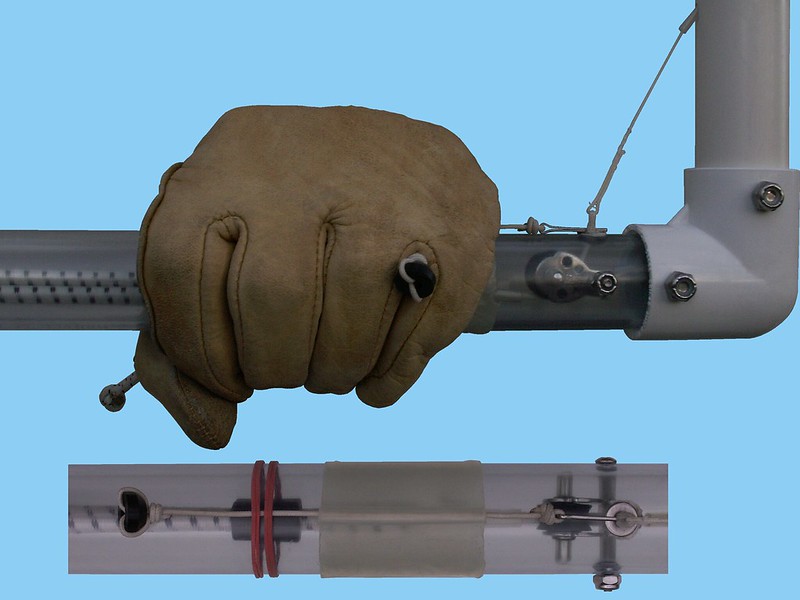Yeah.This is an issue with all spinnaker releases, correct?
I don't buy that there was enough twist in the towline to precipitate Robin's lock. I think that if he'd been using a conventional two point Wallaby arrangement and botched putting the weak link on the bridle end the same way he botched putting it on the towline end - whatever that was - he'd have wound up just as dead.I thought this was only a risk when they're used in a one-point configuration.
Note that there was no photo of the critical malfunction released. The whole followup of the fatality was an exercise in ass covering to take as much heat as possible off the meet organizers and the Wallaby / Moyes release and dump as much as possible on the dead competitor and his nonstandard aerotow weak link.
That being said...
The risk of a snag is very low and manageable.
But why risk and manage it when you can spend fifty bucks (?) on Joe's release and totally eliminate it with a mechanism and assembly designed to do the job?
I was referring to the adjustment on the bicycle - just to be clear.No, I haven't, and don't really understand what there is to adjust.
- You have to use pliers to hold tension on the brake cable while you use a wrench to start clamping down on the adjustment. A wee bit too long and your lever bottoms out on the handlebars before you get safe stopping power. A wee bit too short and your brake pads drag on the rim.
- And if your wheel isn't well trued - if there's a bit of wobble on the rim - you got problems.
- Same deal on the Wallaby release. Too long and you have to go to your "backup release". Too short and you're holding the latch partially open and subjecting yourself to a good possibility of a premature release - which, if you use a standard aerotow weak link, you may not even notice. (Some of the Wallaby releases have throttle cable adjusters which help to tweak things.)
It's mostly a matter of the bends. It's a bad idea to put one of these levers on the basetube 'cause of the extra bend (which is why most people DON'T put them on the basetube). And lotsa people anchor to the carabiner and that bend changes with control input.So do these releases fail after working initially because this adjustment changes?
You're talking about manufacturing a better piece of shit instead of doing the job right and building it into the glider which is twenty times easier and cheaper. And we've got Joe's release which isn't perfect and has a couple of small issues but if you adjust the bottom end properly and preflight it it's perfectly SAFE.Could it be prevented from changing (perhaps through better manufacturing)?
Lose it. Joe's release makes all other cable based releases obsolete. There's zero excuse for putting ANY of them in the air EVER again.Can the adjustment problem always be detected on the ground, or can it happen post-launch?
No. They're built in and well engineered, there's no variation in the bend on the front brake cable and precious little movement with respect to the rear, and as long as the rims stay true you're good to go - or stop.Do brakes on bikes ever have to be readjusted for the same reason?
I got a load to actuation ratio average of 16.14 on the spinnaker shackle and the brake lever assembly gives about a four to one mechanical advantage boost....(though I have no idea what it's L/A is).
Yeah.Instead, if I'm following you, it can enter a state where NO force will actuate it.
http://www.hanggliding.org/viewtopic.php?t=11497
Aerotow release options?
If it's out of adjustment the lever will bottom out before anything happens.Axel Banchero - 2009/06/20 04:57:01 UTC
I just kept hitting the brake lever for a few seconds in WTF mode, and the instructor used the barrel release.
